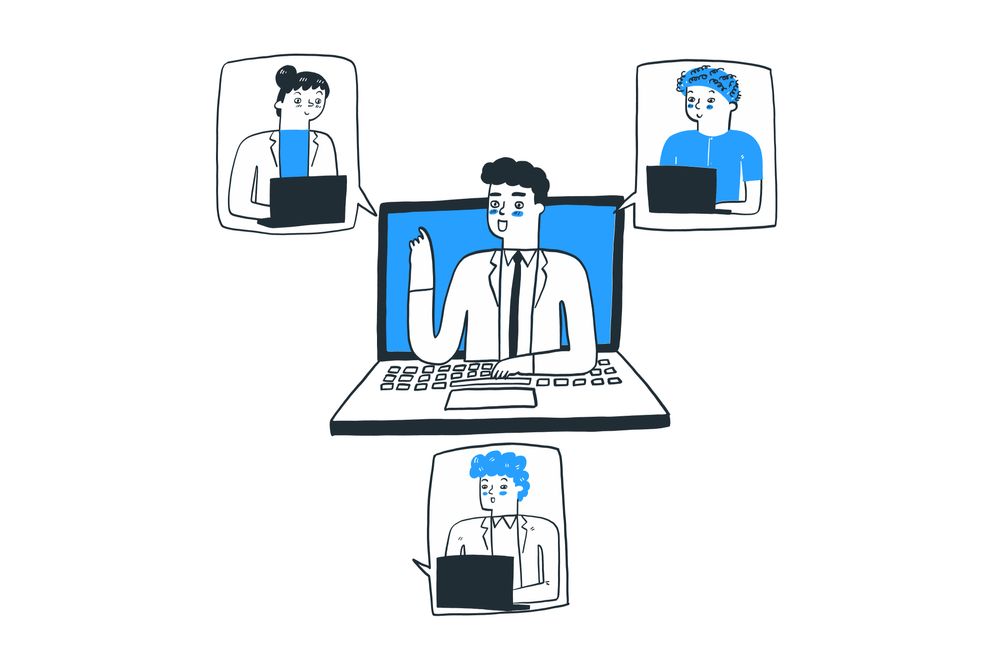When managing software development projects, a crucial component for effective team communication is the daily standup meeting. This Agile practice plays a pivotal role in project management and team collaboration.
I recently delved into the world of productive meetings and stumbled upon an intriguing survey. It echoed what many software engineers might be thinking – Are meetings overdone? (Just a light-hearted thought) 😇
Indeed, while sometimes perceived as disruptive, meetings are integral. However, a staggering 71% of survey participants felt meetings were unproductive. Further, 64% opined that meetings hinder deep thought processes essential for self-improvement, team enhancement, and business growth. Still, meetings are inescapable, especially the pivotal daily standup in the tech realm.
What Is a Daily Standup Meeting?
A daily standup meeting, also known as a daily scrum or a daily huddle, is a brief and focused meeting that is commonly practiced in Agile software development methodologies, such as Scrum.
It’s a time-boxed gathering, meaning it is bound by a fixed unit of time, where the team members come together to provide status updates on their work. The key word here is ‘update,’ so that means the people in your team are more or less aware of what you’ve been doing lately.
In the update, you should discuss any challenges or blockers and synchronize efforts to ensure smooth progress toward your and your team’s goals.
As the name suggests, it’s meant to be conducted while “standing up” in the interest of keeping it short. However, it's important to consider that physical challenges may prevent some individuals from standing. So, while the name suggests standing, the focus should be on creating an inclusive environment that accommodates the needs of all participants.
What Are the Key Characteristics of a Daily Standup Meeting?
The 3 Questions
The three questions in Agile standup meetings are to promote transparency, collaboration, and alignment within the team. They enable team members to stay informed about each other's progress, plan their own work accordingly, and address any blockers promptly.
The questions also help in identifying potential issues or risks early on, allowing the team to take appropriate actions and maintain the project's momentum.
The three questions are:
- What did you accomplish since our last meeting?
This question allows team members to share their progress, highlight completed tasks, and inform others about their contributions to the project. This information helps in understanding the overall progress of the team and identifying potential dependencies or bottlenecks.
- What are you planning to work on today?
This question focuses on the upcoming work for the day. Each team member briefly shares their plans, tasks, or goals for the day. It allows the team to understand what activities are in progress and what will be undertaken next. By sharing plans, team members can identify potential overlaps or dependencies, facilitating coordination and collaboration.
- Any blockers hindering your workflow?
This question provides an opportunity for individuals to raise concerns, seek help, or notify the team about any challenges that may hinder progress. By bringing obstacles to light, the team can collectively brainstorm solutions, offer support, and ensure smooth progress.
Time-Boxed
The meeting is typically short and time-bound, usually lasting between 10 to 15 minutes. However, this also depends on the size of the team. The brief nature of the meeting encourages participants to provide concise updates and maintain the meeting's focus.
Daily Frequency + Same Time
Although some may want to choose their own cadence and have them weekly or bi-weekly, the standup meeting is usually conducted daily, ideally at the same time and place. They’re usually held on the same recurring Zoom channel or in a meeting room at your physical office. Having them at the same time helps with planning things around the standups. In my opinion, mornings are the best time to have them, so that you could set the tone for the day and align team members' activities.
Stop Standup Hijackers
When subjects go astray and become irrelevant, we call them “pizzas.” When somebody in the meeting says “pizza” or puts 🍕 in a group message, that usually signals the subject to be brought back on topic.
When things are unrelated i.e., a discussion about something technical with the marketing team in attendance, a separate meeting could be made after for those who need to be updated on something.
Inclusive Participation
The entire dev team, including developers, scrum master, testers, and product owner, attends the meeting. This promotes transparency, collaboration, and a shared understanding of the project's progress.
Purpose and Benefits of Daily Standup Meetings:
Status Updates
The standup meeting allows team members to share their progress and update others on completed tasks. It enables everyone to stay informed about the team's collective efforts and helps identify any potential gaps in work.
Collaboration and Synchronization
By sharing their plans for the day, team members can identify dependencies, coordinate their activities, and ensure alignment toward achieving project goals. It fosters collaboration and minimizes potential conflicts or duplication of work.
Issue Identification and Resolution
The discussion of obstacles or blockers during the standup meeting helps identify issues early on before they jeopardize the entire project. By raising concerns, team members can seek assistance from others, share knowledge, and collectively find solutions to overcome challenges.
Accountability and Transparency
Daily standups promote a sense of accountability among team members. By providing regular updates in a public forum, team members commit to their tasks and create transparency regarding their progress and potential roadblocks.
Agile Adaptability
The daily standup meeting is a core practice of Agile methodologies. It reinforces the Agile principles of continuous improvement, iterative development, and adapting to changing requirements. It enables teams to quickly respond to challenges and adjust their plans accordingly.
Practice Communicating
This is not a primary benefit, but if you’re an introvert, now might be a good moment to practice communicating.
The standup meeting is an equal participation opportunity, meaning everyone gets to share their progress, ideas, and concerns without feeling overshadowed or interrupted. Also, the condensed format of a standup is more comfortable for introverts, as they can practice expressing themselves succinctly without any interruptions
Quick Tips for a Successful Daily Standup Meeting:
- Preparation: Team members should come prepared with their updates to keep the meeting concise.
- Stick to the Agenda: Avoid diving deep into solutions during the standup. If a topic requires a detailed discussion, schedule a follow-up meeting.
- Engage Everyone: Ensure every member has an equal voice, irrespective of hierarchy or role.
- Use Technology: Utilize project management tools or collaboration software to visualize progress and track blockers.
- Review and Adapt: Periodically review the standup's effectiveness and adjust as needed to cater to the team's evolving needs.





